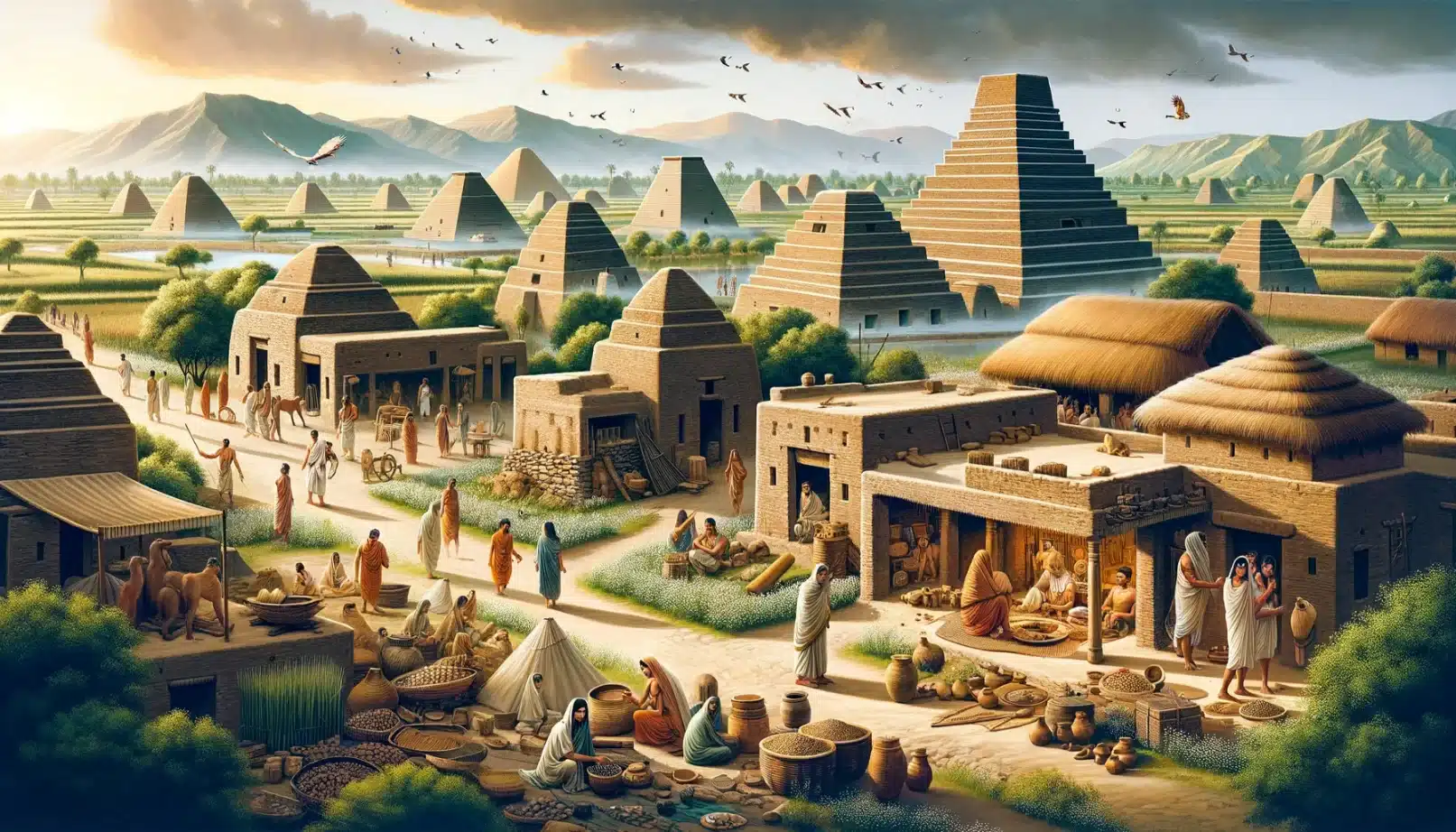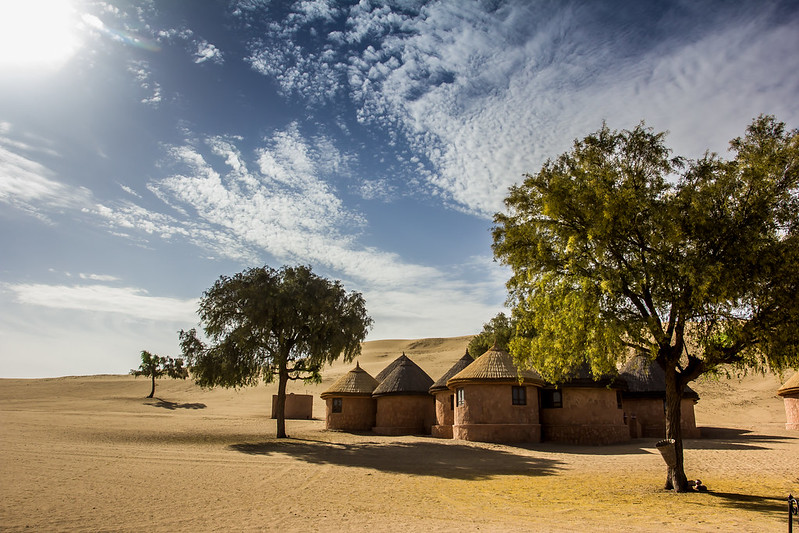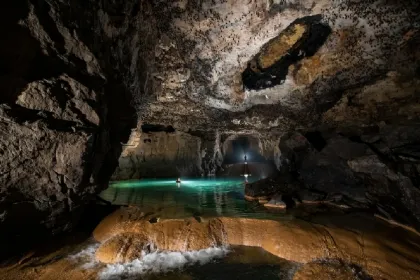Ever wondered what it’s like to travel through the pages of your history textbook? As we collectively learned about the Harappan civilization, it’s intriguing to realize that visualizing its grandeur doesn’t have to be merely a figment of our imagination. In fact, as Indians, we have the unique privilege of exploring the remnants of the Indus Valley Civilization, or the Harappan culture, a beacon of our rich and ancient heritage. This civilization, one of the world’s earliest urban cultures, thrived from 2500 to 1700 BCE, parallel with the grand civilizations of Mesopotamia and Egypt.

Today, India boasts over 100 sites related to this millennia-old civilization scattered across various states. Harappa, Mohanjodaro, Banawali, and Dholavira are the four main Harappan Sites. This civilization once stretched from northeastern Afghanistan to Gujarat and Pakistan’s Balochistan to western Uttar Pradesh. While historical partitions have placed some prime sites in Pakistan and Afghanistan, the essence of this civilization’s grandeur remains deeply embedded in the Indian landscape, particularly in Gujarat. It is now an open book waiting to be read and explored by booking a cab in Ahmedabad, offering a glimpse into an era that many have only encountered in history books.
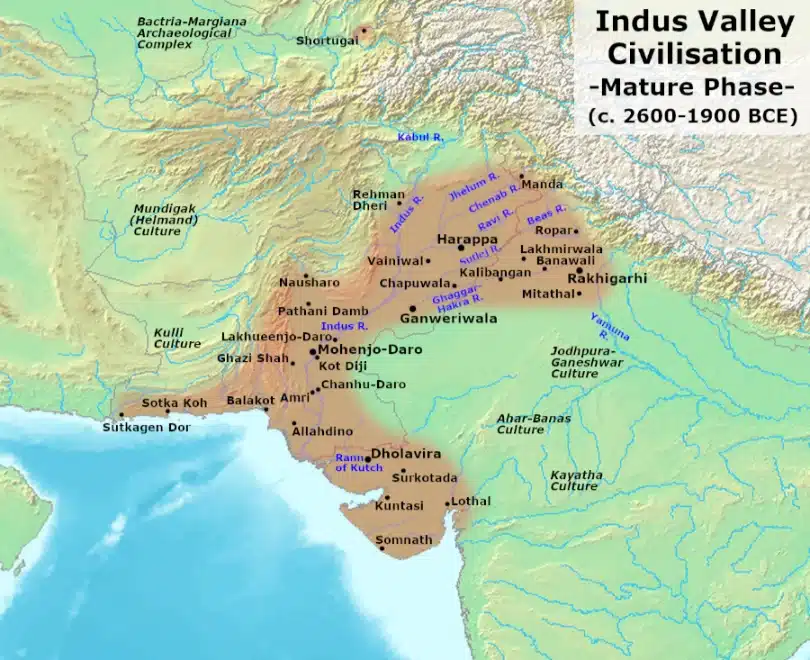
Tracing the Harappan footsteps by road
An Indus Valley Civilization road trip through the Indus Valley Civilization in India is a journey through the landscapes of history and a portal to a bygone era, where imagination meets the remnants of a 6000-year-old civilization. As you travel through these ancient sites, questions about the lives, beliefs, and customs of the Harappan people naturally arise. What did their daily lives entail? What beliefs and social structures governed their society? Such queries make the journey a deeply engaging experience, allowing you to feel almost teleported into their world.
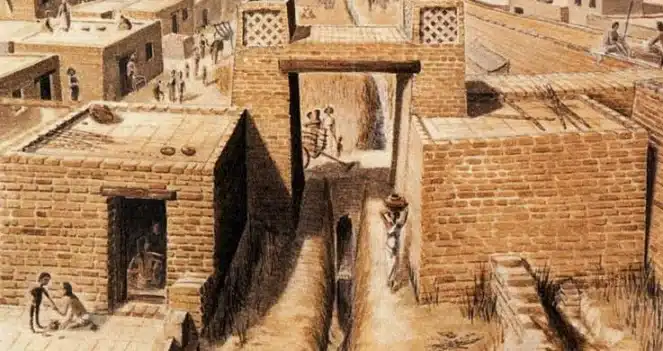
We believe that this Indus Valley civilization road trip is more than a mere holiday; it’s an opportunity to connect with a part of our collective past and to walk in the footsteps of an ancient civilization that has shaped much of what we know today. You get to travel through the very lands where the Harappan people, known for their advanced urban planning, skilled metallurgy, and intricate seal carvings, once thrived. It’s a chance to witness and experience the marvels of a culture that has stood the test of time, offering a unique perspective on the history and evolution of human civilization. Gujarat stands out as an ideal state for embarking on an Indus Valley civilization road trip to explore the Indus Valley Civilization, offering a plethora of unparalleled insights into this ancient society.
The Harrapan route – A road trip through the heart of Gujarat
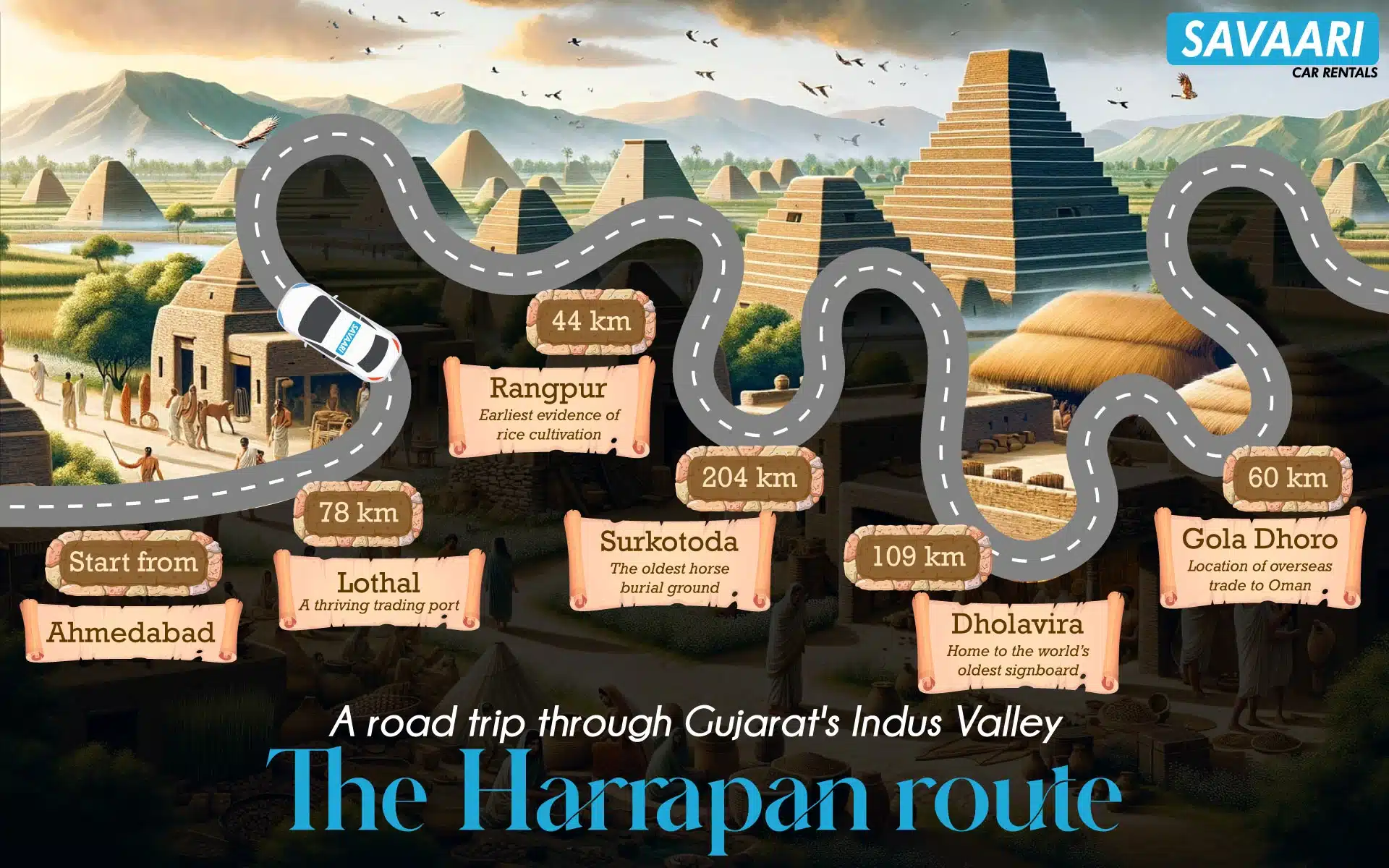
When you think of Gujarat, many images might spring to mind: the bustling streets of Ahmedabad, a lineage of renowned personalities, the serene beaches along the Arabian Sea, the iconic Statue of Unity, and perhaps the sacredness of its numerous temples. Yet, there’s a deeper, more ancient facet to this region. It is rooted in a time over two millennia before the Common Era. During an era when many parts of the world were still navigating the Stone Age, some areas of present-day Gujarat were home to flourishing and advanced civilizations. Gujarat houses over 200 sites of this ancient era, predominantly clustered around three significant destinations: Lothal, Surkotada, and Dholavira. The extensive surveys conducted in the peninsulas of Saurashtra and Kutch, and the mainland of Gujarat between 1954 and 1958, uncovered various phases of the Harappan civilization, revealing a new chapter of the Indus Empire.

Around 2500 B.C., the Harappans began to infiltrate Kutch, establishing settlements with remarkable speed and strength. To date, 60 Indus settlements have been identified in Kutch alone. Evidence from Kutch and parts of Gujarat suggests that the Harappans brought their fully developed culture to these regions, thriving until the eventual decline of their civilization. This led to significant migration from Kutch to the hinterlands of Gujarat and possibly to Saurashtra. For history buffs and enthusiasts of ancient civilizations, this Indus Valley road trip in Gujarat is an invaluable journey. If you’re passionate about exploring the depths of history and the intricacies of ancient societies, the Indus Valley trail in Gujarat is an ideal itinerary for your next adventure.
Ahmedabad to Lothal – The start of a historical journey
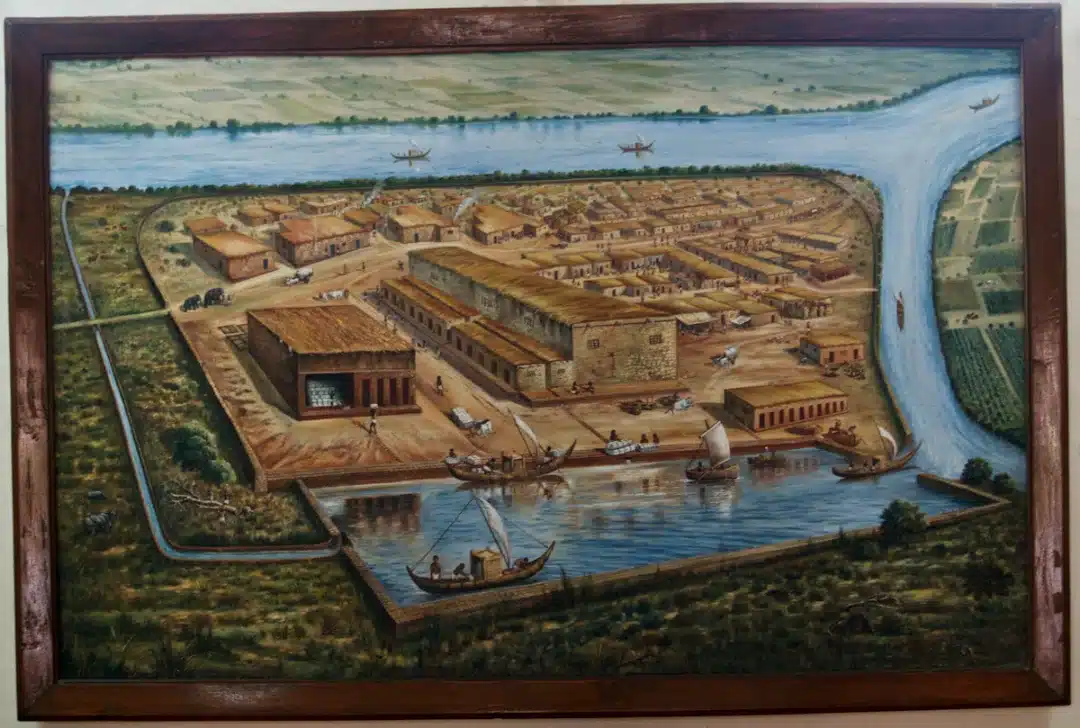
Start your Indus Valley Civilization road trip by booking a car rental from Ahmedabad, situated a mere 80 km southwest of the city, and be transported back over 4500 years to the ancient site of Lothal. This pivotal settlement of the Indus Valley Civilization, which extended into present-day Pakistan, stands as an archaeological gem. The name ‘Lothal’, translates to ‘Mound of the Dead’ in Gujarati. It is believed to be derived from ‘Loth’ and ‘thal’ (sthal), adding a layer of historical significance to the site. It is on the verge of being recognized as a UNESCO World Heritage Site. Lothal boasts the world’s oldest known artificial dock, ingeniously linked to an old course of the Sabarmati River, marking it as a significant historic site.
Exploring the ruins of Lothal – A glimpse into ancient urban life
As you delve into the depths of Lothal, you will encounter the acropolis, the meticulously planned lower town. You will also find a bead factory, warehouses, and an advanced drainage system, all testifying to the Harappans’ sophisticated urban planning skills. The presence of canals and dockyards hints at its significant role in ancient trade networks. Artifacts suggest commercial interactions with distant civilizations like Mesopotamia, Egypt, and Persia.
The urban design of Lothal – A reflection of Harappan excellence
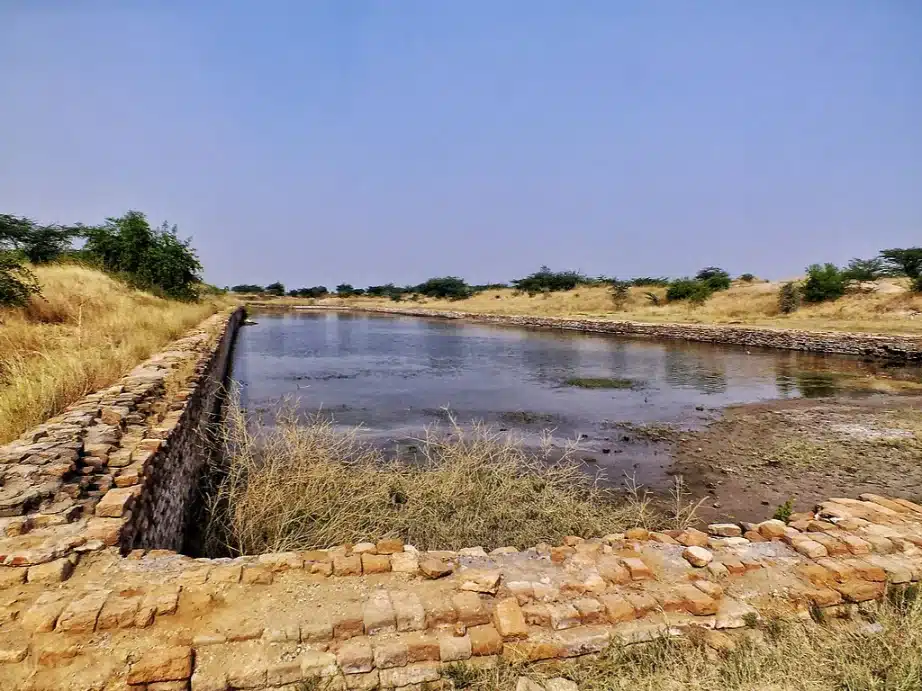
As the most accessible Harappan-era site in Western India, Lothal, situated along the Bhogava River. It is a tributary of the Sabarmati, emerged as a prosperous port city. Despite its smaller size compared to Mohenjodaro, the seven-hectare site offers a comprehensive view of Harappan culture. The town’s sturdy walls were likely designed to withstand tidal floods. Its division into the upper and lower town areas demonstrates a high level of urban planning.
Lothal’s Archaeological Museum – A trove of ancient artifacts
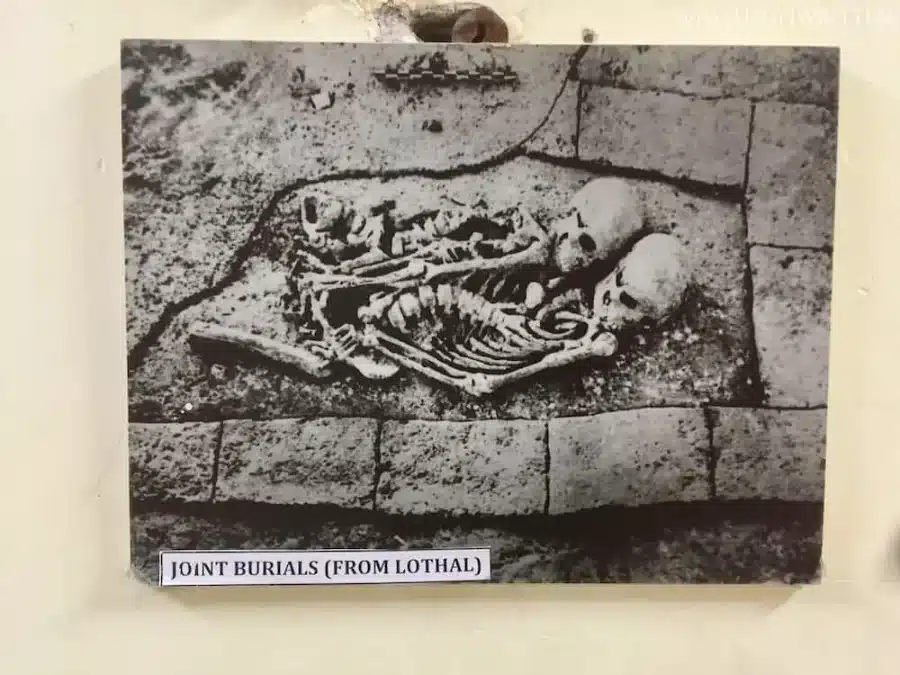
Near the site, the Archaeological Museum, operational from 10 am to 5 pm (closed on Fridays), is a haven for historical artifacts. It houses an array of items such as jewelry, pottery, seals and religious symbols. It also includes objects of daily use, offering visitors a tangible connection to the ancient world. Excavations here have offered the greatest number of antiquities in the archaeology of modern India.
Distance – 78.2 km
Time taken – 1 hr 27 min
Lothal to Rangpur – Unearthing’s Harappan legacy
After exploring the ancient marvels of Lothal, your next destination on this historical road trip is Rangpur. It is located in the Limdi Taluka of Ahmedabad district. Rangpur is the first site to be re-excavated post-independence, suspected to be a Harappan outpost. This site provides crucial insights into the region’s Harappan migration patterns and settlements. The discoveries at Rangpur shed light on how the Harappans brought their culture and lifestyle to Gujarat. It also shows how it significantly impacted the region’s history before their civilization declined, leading to large-scale migration.
Rangpur’s archaeological significance – A mosaic of cultural artifacts
It has revealed evidence of flakes and yellow and green color pots attributed to pre-Harappan people, indicating a continuous habitation and cultural evolution in the area. Six distinct types of pottery have been excavated so far, offering a fascinating glimpse into the artistic and utilitarian aspects of the people who once inhabited this region.
Distance – 44.1 km
Time taken – 51 min
Rangpur to Surkotada – Uncovering a Harappan stronghold
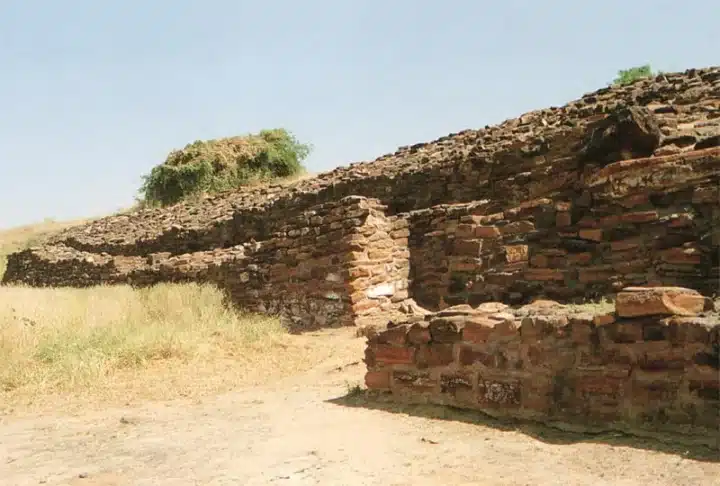
The next leg of your historical road trip takes you from Rangpur to Surkotada, a site that was discovered in 1964. Surkotada, an intriguing chapter in the Harappan narrative, offers unique insights into the civilization’s architectural and societal advancements.
Surkotada – A testament to Harappan resilience and planning
Upon reaching Surkotada, you’ll find that this ancient site, believed to have been settled around 2300 BCE, boasts a fortified citadel and a residential annex, constructed using mud brick, mud lumps, and rubble. Remarkably, the site remained continuously occupied for 400 years, reflecting the Harappans’ stable and enduring presence in the region. Despite its relatively small size, Surkotada stands on an equal footing with other major Harappan sites like Kalibangan and Lothal in terms of urban planning and architectural sophistication.
Surkotada’s strategic importance and archaeological finds
Many scholars theorize that Surkotada’s location was strategically chosen to control the eastward migration of the Harappans from Sind, potentially serving as a regional capital or garrison town. Excavations have unearthed an array of fascinating artifacts, including painted pottery adorned with Indus alphabets, copper objects, and a typical Harappan seal. Additionally, caches of copper beads and bangles, along with terracotta toys, tanks, and beads, have been discovered at the site.
Surkotada’s groundbreaking discovery – Evidence of ancient horses
One of the most significant findings at Surkotada is the discovery of horse remains dating back to 2000 BCE. This revelation is considered crucial in understanding the Harappan civilization, shedding light on their domestication practices and trade networks.
Distance – 204.1 km
Time taken – 4 hr 8 min
Surkotada to Dholavira – One of the largest Indus Valley Sites
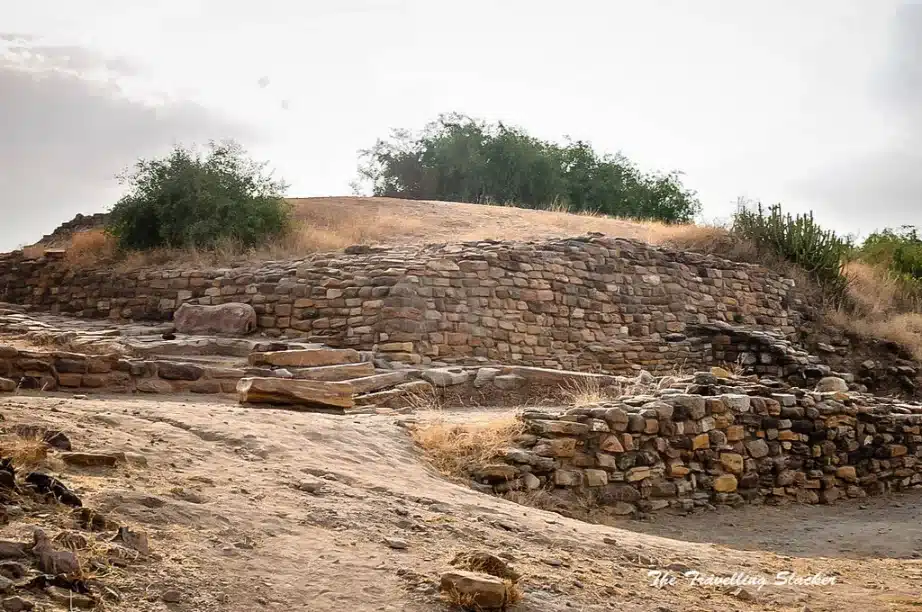
Leaving the site of Surkotada, your next destination in this journey through time is Dholavira, renowned as one of the five largest Indus Valley sites. Alongside Mohenjodaro, Harappa, Gharo Bhiro in Pakistan, and Rakhigarhi in India, Dholavira stands as a testament to the vast expanse and sophistication of the Indus Valley Civilization.
Dholavira – A masterclass in ancient urban planning
Situated on the Khadir island of Kutch and locally known as Kotada, Dholavira displays remarkable evidence of urban planning characteristics of the Indus Valley Civilization. Archaeologists have divided this settlement into three distinct sections: the citadel, middle town, and lower town. The city itself stretches about 600 meters north to south and 775 meters east to west, encompassed by an enormous fortification that encloses a series of reservoirs.
The mysteries of Dholavira – Host of the world’s oldest signboard
One of the most intriguing aspects of Dholavira is the presence of ten symbols on the northern gate, known as the Dholavira Signboard. This artifact could potentially represent the world’s oldest known signboard. Additionally, the discovery of a range of funerary structures at Dholavira provides valuable insights into the socio-religious beliefs and practices of the Indus Valley Civilization’s inhabitants.
Dholavira’s temporary abandonment and return
Dholavira presents a unique chapter in the Indus Valley Civilization’s history, as it was a site that experienced temporary abandonment. According to Gujarat Tourism, the original settlers eventually returned, but with a significant shift in their way of life. They established a de-urbanized culture, choosing simplicity over the complexities of their once grand civilization. Archaeological evidence suggests a period of desertion, followed by a return during the late Harappan stage, marked by a noticeable change in pottery styles. This phase of Dholavira’s history is indicative of a larger pattern of migration and cultural transformation driven by climatic changes, including severe aridity and the drying up of rivers like Saraswati.

The resultant drought-like conditions prompted migration towards the Ganges valley, south Gujarat, and further into Maharashtra. Dholavira’s decline also coincided with the fall of Mesopotamia, hinting at the interconnectedness of ancient economies. The collapse of this major market had profound effects on the Harappans’ local industries, including mining, manufacturing, and trade.
Dholavira’s recognition as a UNESCO World Heritage Site
Dholavira’s historical and cultural significance was further acknowledged when it was declared a UNESCO World Heritage Site on 27th July 2021. This accolade came during the 44th session of the World Heritage Committee of UNESCO. The site had been on UNESCO’s tentative list since 2014, with India submitting its dossier in January 2020. With this recognition, Dholavira not only became the fourth UNESCO World Heritage Site in Gujarat, joining the ranks of Champaner near Pavagadh, Rani ki Vav in Patan, and the historical city of Ahmedabad but also the 40th from India. Significantly, it is the first site from the ancient Indus Valley Civilization in India to receive this prestigious tag, marking it as a monument of exceptional importance in the global cultural heritage landscape.
The citadel and town structure of Dholavira
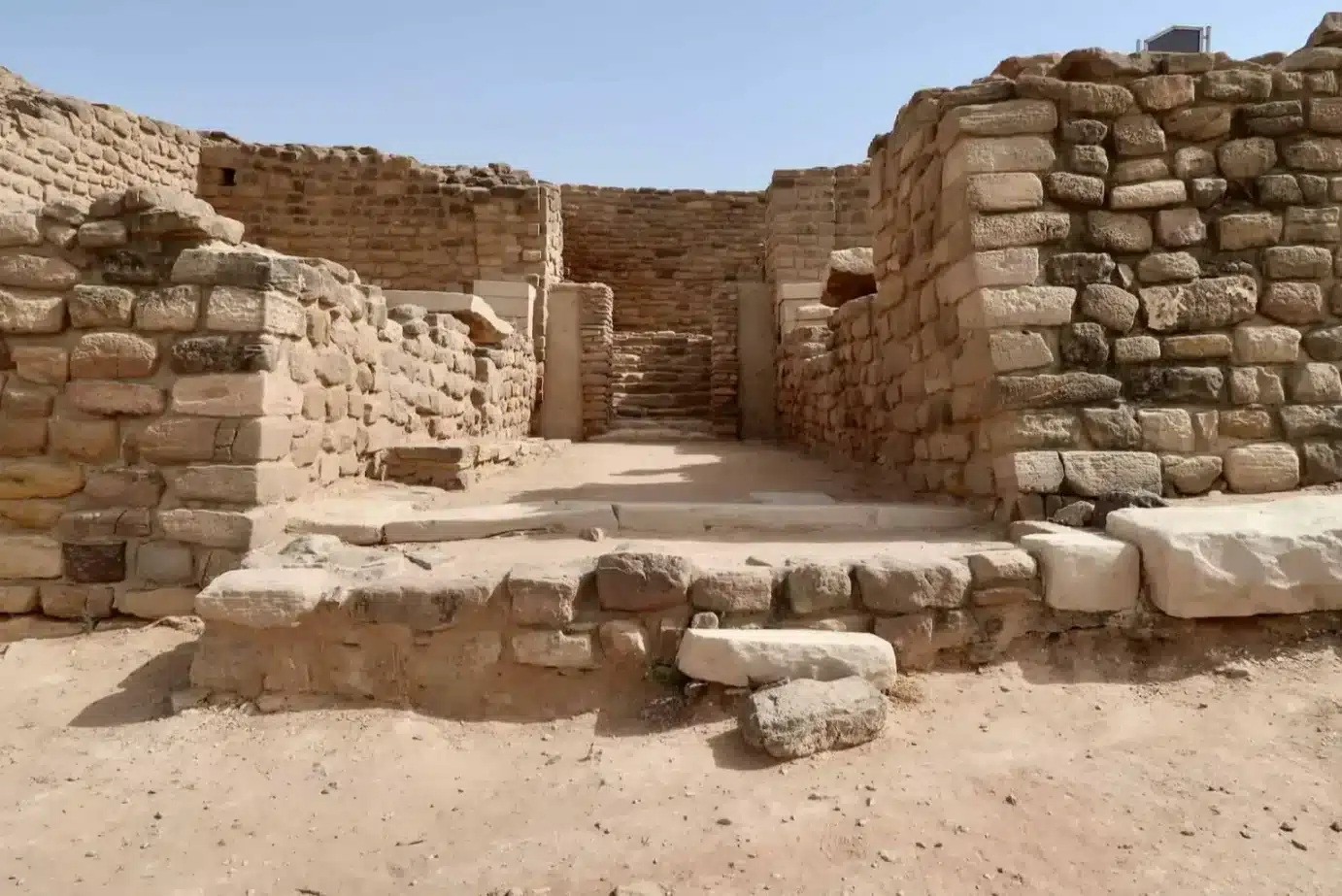
The upper town of Dholavira is particularly impressive, with a towering castle adjacent to double ramparts, illustrating the settlement’s defensive and administrative significance. The embattled middle town features multiple gates within its enclosure, facilitating communication with the lower town to the east and the open spaces on the other side. The lower town, with its constructed areas, built-up projections, open recesses, gateways, street systems, wells, and large open spaces, offers a glimpse into the daily life and urban structure of the Harappan people.
Distance – 108.9 km
Time taken – 2 hr 32 min
Dholavira to Gola Dhoro – A lesser-known Harappan site
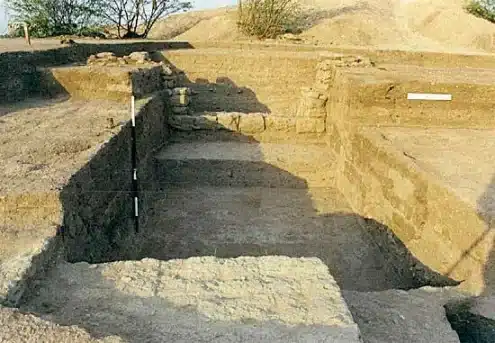
After exploring the grandeur of Dholavira, the journey continues to Gola Dhoro, an intriguing archaeological site of the Indus Valley Civilization. Located at the head of the Gulf of Kutch, near Bagasara in the Kutch district of Gujarat, Gola Dhoro offers a unique perspective on the smaller, yet significant settlements of this ancient civilization.
A small settlement with big discoveries
Gola Dhoro, though modest in size, covering less than 2 hectares, has been a site of remarkable archaeological findings. The site contains a small fortified area of approximately 50×50 meters, surrounded by living quarters and manufacturing sites both inside and outside this area. Dating from 2500-2000 BC, Gola Dhoro has unveiled substantial evidence of manufacturing and trade activities, highlighting the importance of such smaller settlements in the economic development of the Indus Valley Civilization.
Unique finds and unicorn craftsmanship
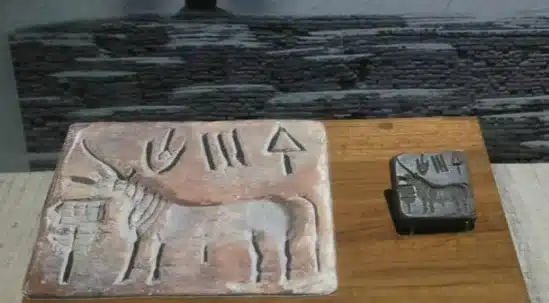
Among the significant discoveries at Gola Dhoro are craft items such as shells, semi-precious stones, stone beads, faience, and copper artifacts. Notably, archaeologists unearthed a unique unicorn seal with a hollow space, possibly a container, inside it, along with other Harappan seals. Six of these seals bear inscriptions and unicorn depictions, common in larger urban centers of the Indus Valley Civilization and used in trade. One of the seals features a deep, rectangular cavity, a unique find not reported at any other Harappan site.
Gola Dhoro’s fortified structure and trade activities

Despite its small area, Gola Dhoro boasts a wall measuring 5.20 meters in width, constructed in three successive stages. The settlement was a hub of craft and trading activities, specializing in the production of shell bangles, semi-precious stone beads, copper, and faience objects. Bead manufacturing was primarily conducted outside the walled area, while faience objects were produced within it. This layout, featuring an unwalled town and a walled citadel, suggests that Gola Dhoro was a significant center for trade and industry.
Gola Dhoro’s role in overseas trade to Oman
Further underscoring Gola Dhoro’s role in trade, archaeologists found large blackware storage jars, indicating involvement in overseas commerce. These vessels were likely used for transporting goods to Magan (present-day Oman), hinting at the settlement’s extensive trade networks.
Distance – 60.3 km
Time taken – 1 hr 21 min
Gola Dhoro to Ahmedabad – From ruins to modern splendor
Continuing from Gola Dhoro, you can return to Ahmedabad, where a picturesque journey awaits. After immersing yourself in historical exploration and glimpsing ancient lifestyles, Ahmedabad offers a chance to discover its own marvels. To enhance your visit, check out this comprehensive Ahmedabad travel guide which ensures a wholesome tour of Ahmedabad’s wonders.
How to plan your Indus Valley civilization road trip in Gujarat
As you embark on this captivating Indus Valley civilization road trip across Gujarat, tracing the path of the ancient Indus Valley Civilization, you’ll be immersing yourself in a journey that’s not just about the miles but about traveling through centuries of history. Covering iconic sites like Lothal, Rangpur, Surkotada, Dholavira, and Gola Dhoro, you’ll encounter the marvels of one of the world’s earliest urban civilizations. The entire trip will take you approximately 10 hours and 19 minutes to complete, but the experience will stay with you for a lifetime. For an unhurried and comfortable journey, consider booking a chauffeured Savaari in Ahmedabad, and spread your adventure over two days, allowing you to absorb each site at your own pace.
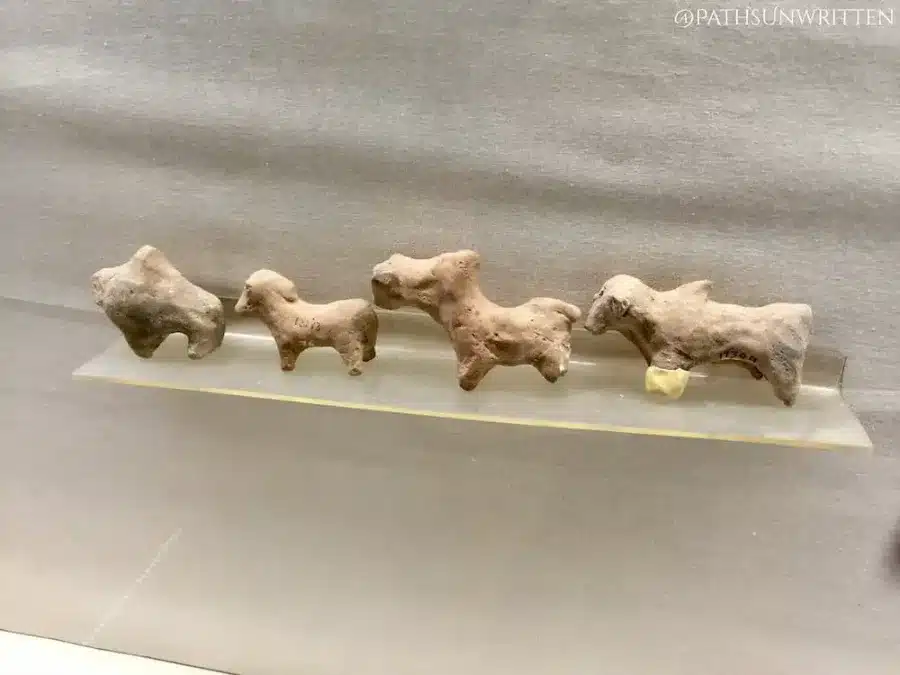
This journey offers more than just a glimpse into India’s rich archaeological heritage. It’s a portal into the enduring legacy of an advanced and sophisticated culture. To make your journey even more memorable, consider timing your Indus Valley civilization road trip around the Rann of Kutch festival. You can find all the details related to the Rann of Kutch festival here. It is celebrated every year from the end of November to early February. The Rann Utsav is a vibrant showcase of local culture, crafts, and traditions set against the stunning backdrop of the white salt desert. Immerse yourself in the festivities, enjoy the local cuisine, and experience the warmth of Gujarati hospitality. By combining your exploration of the ancient Harappan sites with the contemporary cultural extravaganza of the Rann Utsav, you’re not just traveling across places; you’re weaving through the tapestry of time, from the ancient to the present.
From Rajasthan to Jammu – Other notable Indus Valley sites
Beyond Gujarat’s well-known sites, several other Indus Valley civilization sites in India offer equally fascinating insights into this ancient civilization.
Kalibangan, Rajasthan
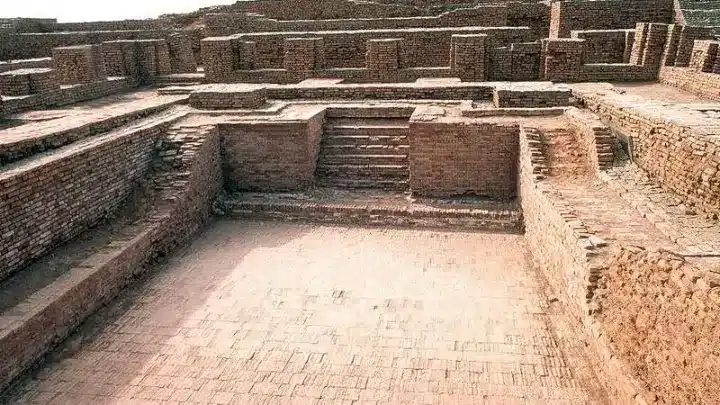
Situated around 210 km from Bikaner, Kalibangan thrived on the banks of the River Ghaggar. It is a remnant of the ancient Sarasvati River, from 3500 BC to 1750 BC. Discovered in the 1900s, the site revealed the world’s first ploughed field and ritualistic fire altars. The nearby Kalibangan Museum displays pottery and other artifacts found during the excavation.
Rakhigarhi, Haryana
This site is located about 150 km from Delhi, in Haryana. As one of the largest settlements of the Indus Valley discovered here, Rakhigarhi dates from 2600 BC to 1900 BC. Excavations beginning in 1963 unveiled a well-planned city with sophisticated roads and sewage systems. Numerous terracotta statues, bronze toys, and other artifacts were unearthed, highlighting the city’s urban prowess.
Alamgirpur, Uttar Pradesh
Located in Uttar Pradesh’s Meerut district, Alamgirpur, or Parasaram-ka-khera, was a Harappan-Bara period settlement existing from 3300 BC to 1300 BC. Major discoveries here include ceramic items like roof tiles, cups, vases, beads, carts, a humped bull, and a broken copper blade, offering a snapshot of daily life in ancient times. To delve into the rich history of Alamgirpur, book a Savaari from Meerut and explore the site’s numerous relics.
Balu, Haryana
This small fortified settlement has revealed a wealth of plant remains, providing insights into the agricultural practices of the time. Findings include barley, wheat, rice, horsegram, green gram, peas, sesamum, melon, watermelon, grapes, dates, and garlic. Notably, garlic remains from Balu are recognized as the earliest evidence of its use in south and southeast Asia, making it one of the Indus Valley civilization’s important points.
Farmana, Haryana
Significant for its burial site with 70 graves from the Mature Harappan period (2500–2000 BC), Farmana Khas has revealed intricate details of Harappan life. Excavations uncovered terracotta toys, copper bangles, gold ornaments, and abundant pottery. A standout discovery at Farmana is the skeleton of a middle-aged woman. It was adorned with three shell bangles, two copper bangles, copper earrings, beads, and foot ornaments.
The opulence of her burial items indicates her wealthy status in Harappan society. It offers insights into the social hierarchies and cultural norms of the time. Further intriguing is the evidence of inter-regional marriages, a practice the Harappans might have employed for trade purposes. The discovery of bangles and beads made from conch shells. These materials are native to Gujarat, hinting at long-distance trade relations and cultural exchanges.
Baror, Rajasthan
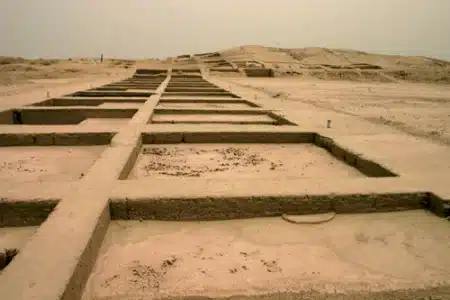
Belonging to the Indus Valley Civilization, Baror revealed Pre-Harappan and Harappan pottery. It also incuded terracotta cakes, bangles, and a human skeleton with ornaments. Remarkable finds include two stones producing red liquid and a pitcher filled with pearls, emphasizing the site’s rich cultural heritage.
Bet Dwarka, Gujarat
Investigations in the 1980s at Bet Dwarka uncovered artifacts from the Late Harappan period. Finds include a 1500 BCE protection wall, a Harappan seal, a coppersmith’s mold, and a copper fishhook. They point to historic trade relations with the Romans. Additionally, Bet Dwarka is linked to the mystery of a submerged lost city, which you can read all about by clicking here.
Bhagatrav, Gujarat
As a minor Indus Valley site, Bhagatrav revealed lead pieces, iron-rich earth samples, stone beads, and evidence of glazed ware production. It likely served as a contemporary trading port to Lothal.
Desalpar Gunthli, Kutch District, Gujarat
This village and site in the Nakhtrana Taluka of Kutch District showed regular Harappan pottery. It also shows seals made of various materials, and ‘glazed ware’ similar to that found at Mohenjodaro. This hints at the site’s significance within the Harappan cultural sphere.
Manda, Jammu
The excavation at Manda revealed a sequence of occupation, from Pre-Harappan to the Kushan period. Artifacts include Harappan Red ware, copper spirals, bone arrowheads, and terracotta bangles, illustrating the site’s long history of human activity.
Why travel through the Indus Valley civilization with Savaari?
Each location across the Indian subcontinent that contains remnants of the Indus Valley Civilization offers a unique perspective on this ancient culture. It enhances our understanding of its broad influence and enduring legacy. The advanced Indus Valley Civilization town planning and Harappan Civilization town planning, with their grid-like street layouts and intricate drainage systems, are early examples of principles still relevant in contemporary urban design.
While the exact religion of the Indus Valley Civilization remains a topic of intrigue, their contributions in areas like standardized weights and measures were fundamental to fair commerce, a concept that is crucial in today’s global market. The cities of the Indus Valley Civilization showcase remarkable innovations in water management. It also involves efficiently designed wells and reservoirs, paralleling modern sustainable resource management practices. Additionally, the art and craft of the Indus Valley Civilization, reflected in their pottery, jewelry, and urban structures, offer a glimpse into the rich cultural fabric of this era, considered by many as a golden period of Indian history.
Embarking on an Indus Valley civilization road trip to these historical sites not only offers a journey back in time but also promises spectacular photography opportunities and unforgettable experiences. For a smooth and hassle-free exploration, download the Savaari app to navigate your Indus Valley civilization road trip effortlessly. As you traverse these ancient sites, you will connect with a pivotal chapter in human history. You will also enrich your understanding of the world’s cultural and technological evolution, creating a bridge between past and present.
Last Updated on February 13, 2024 by blogadmin
